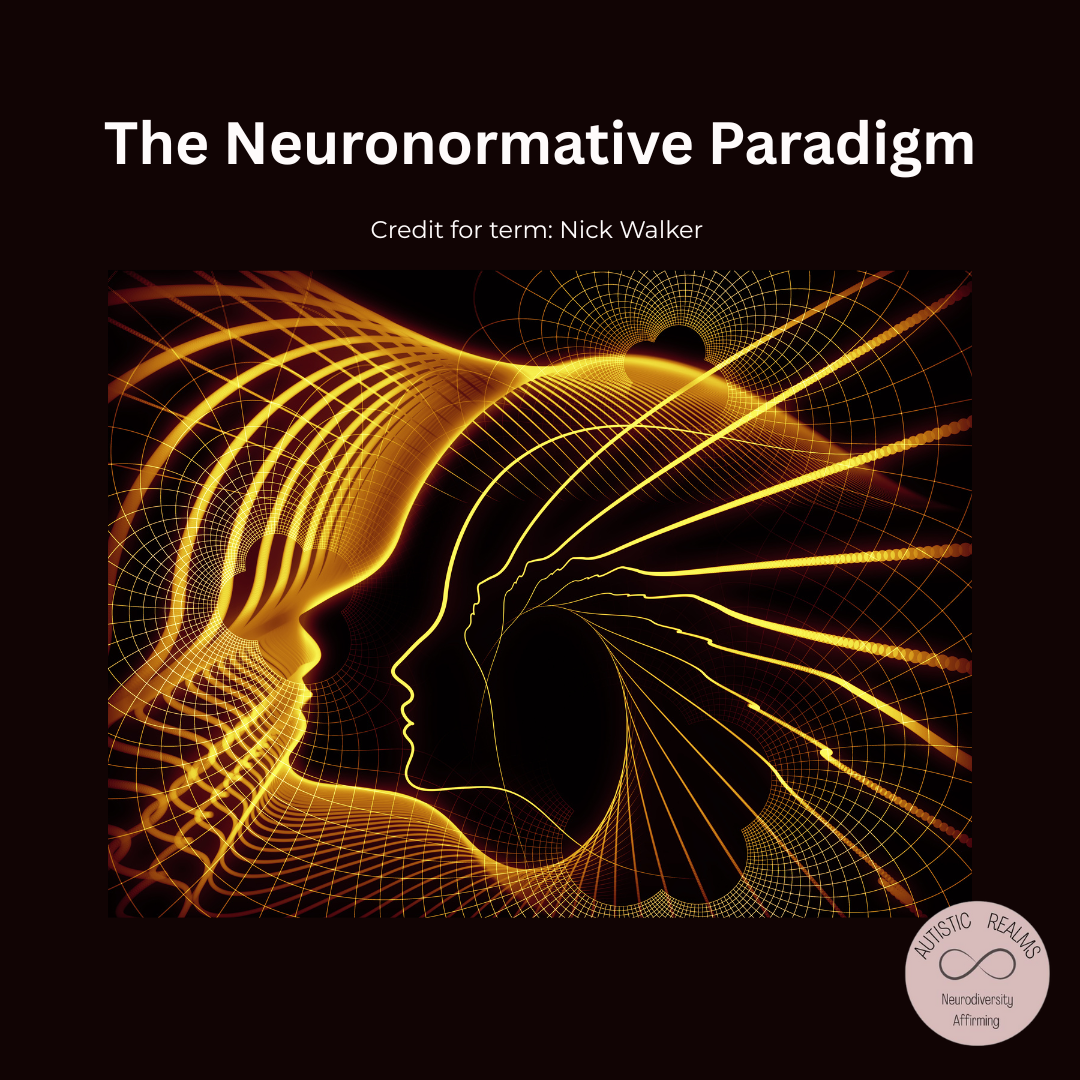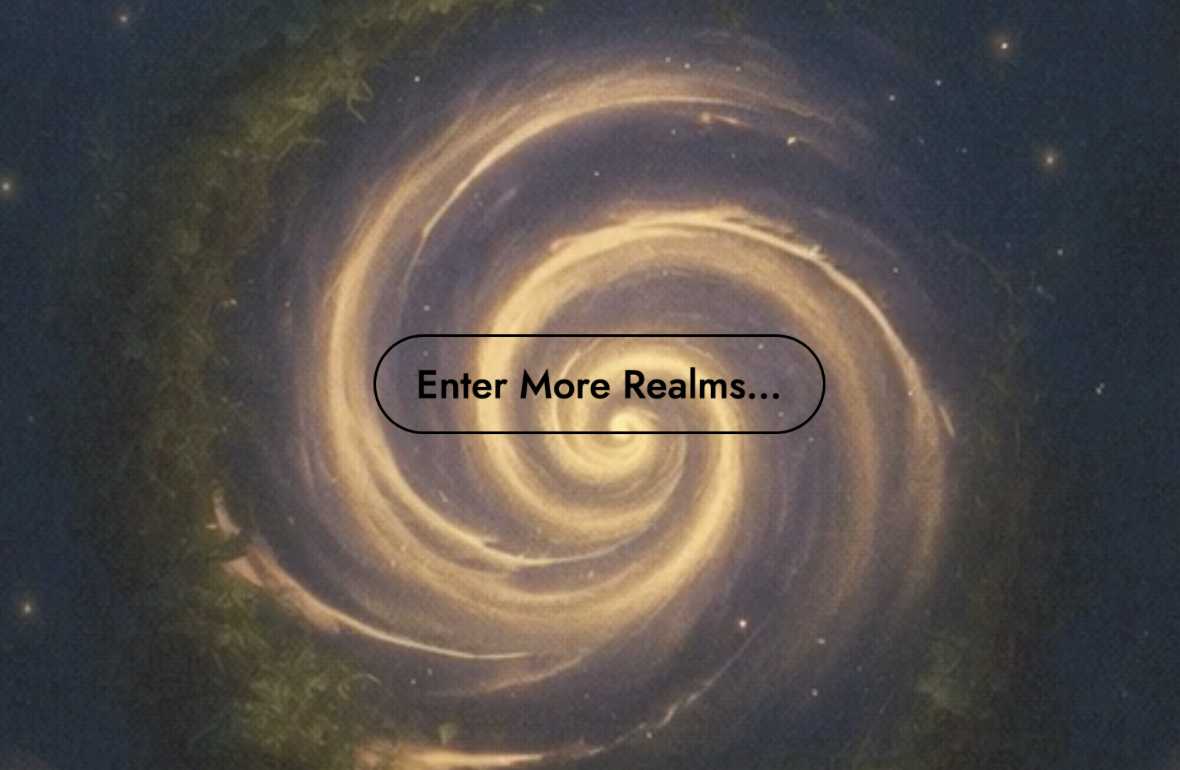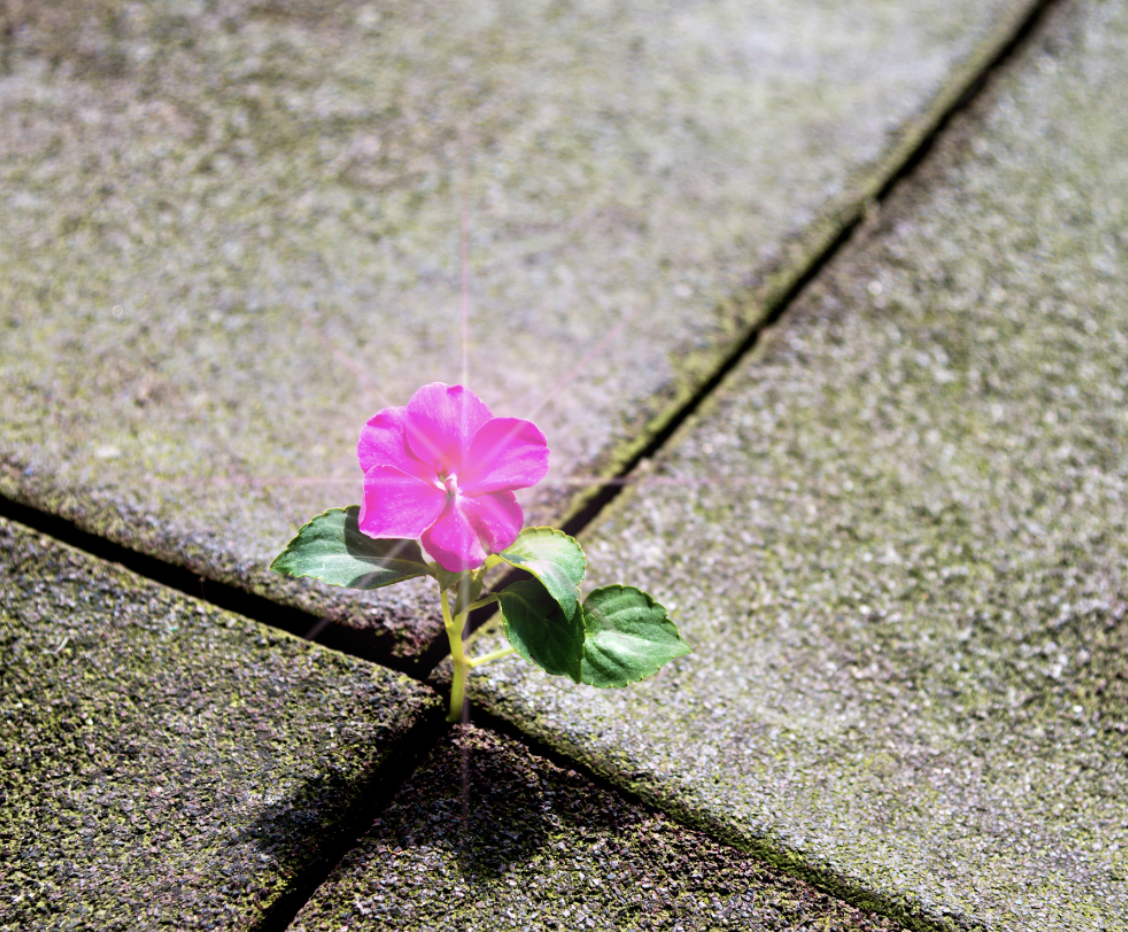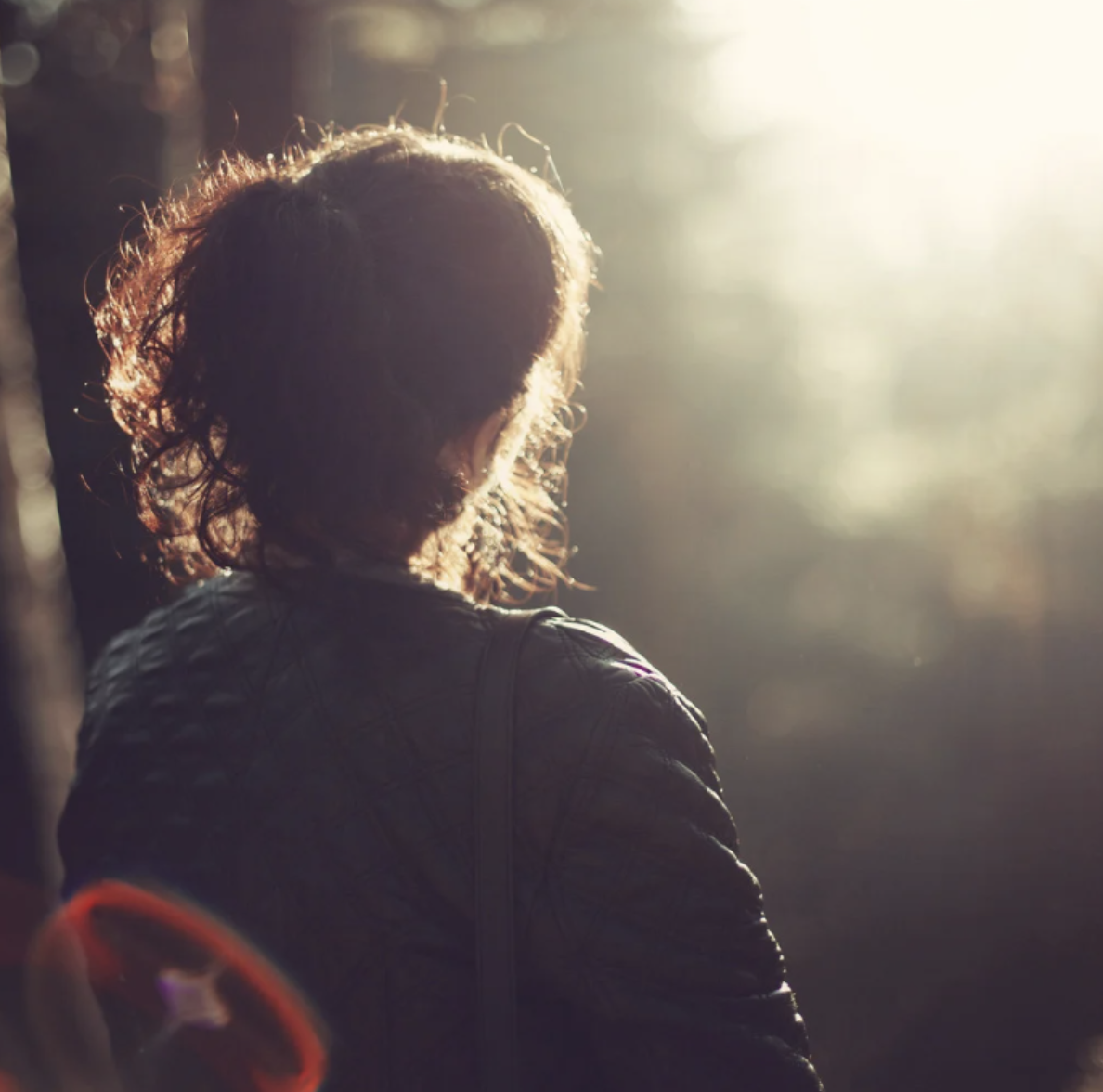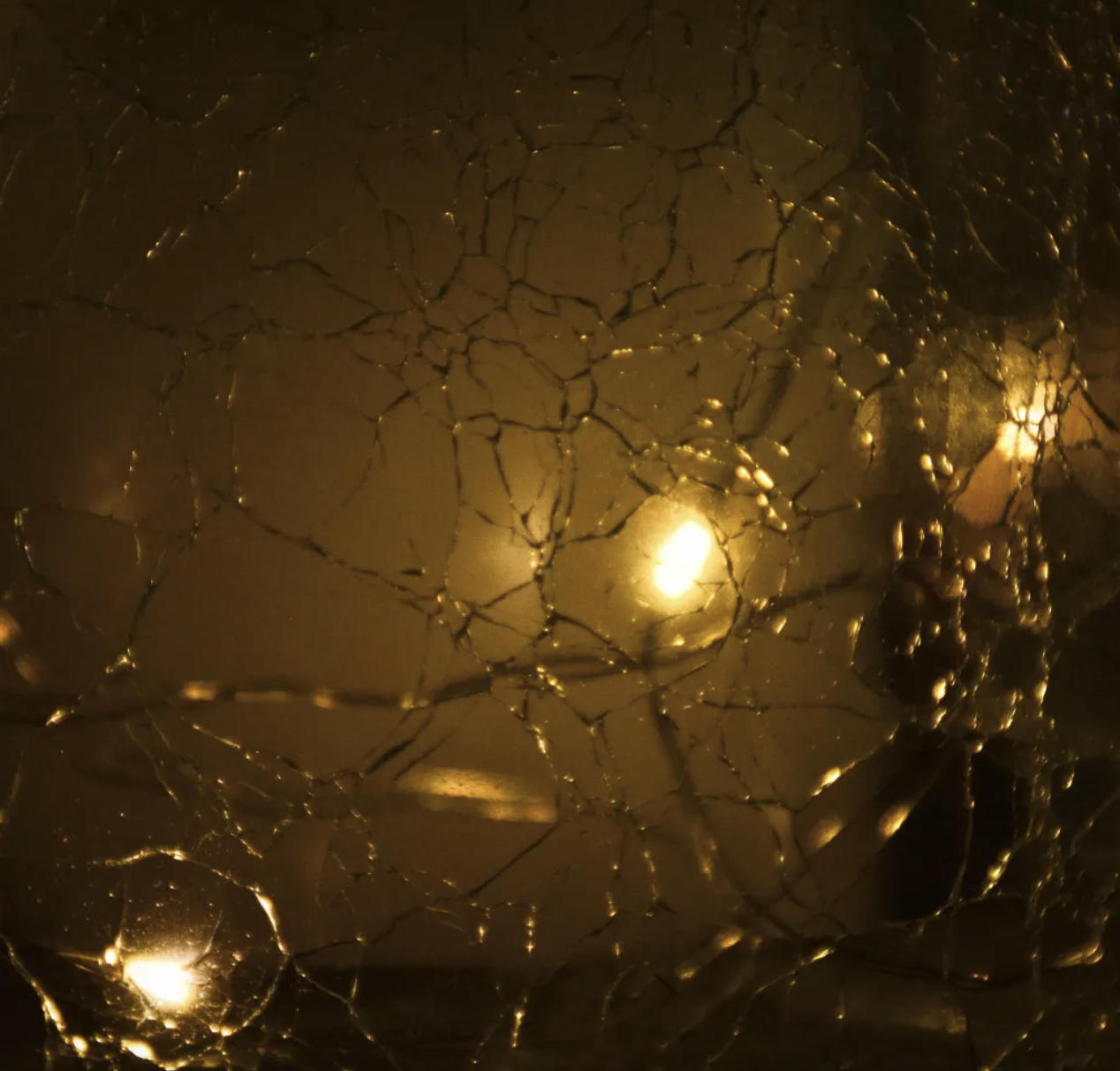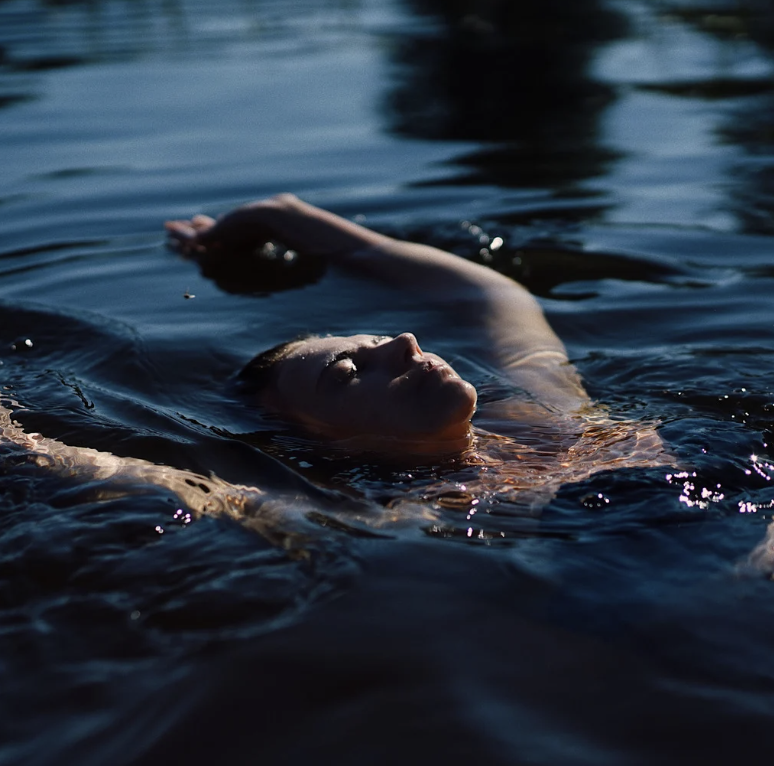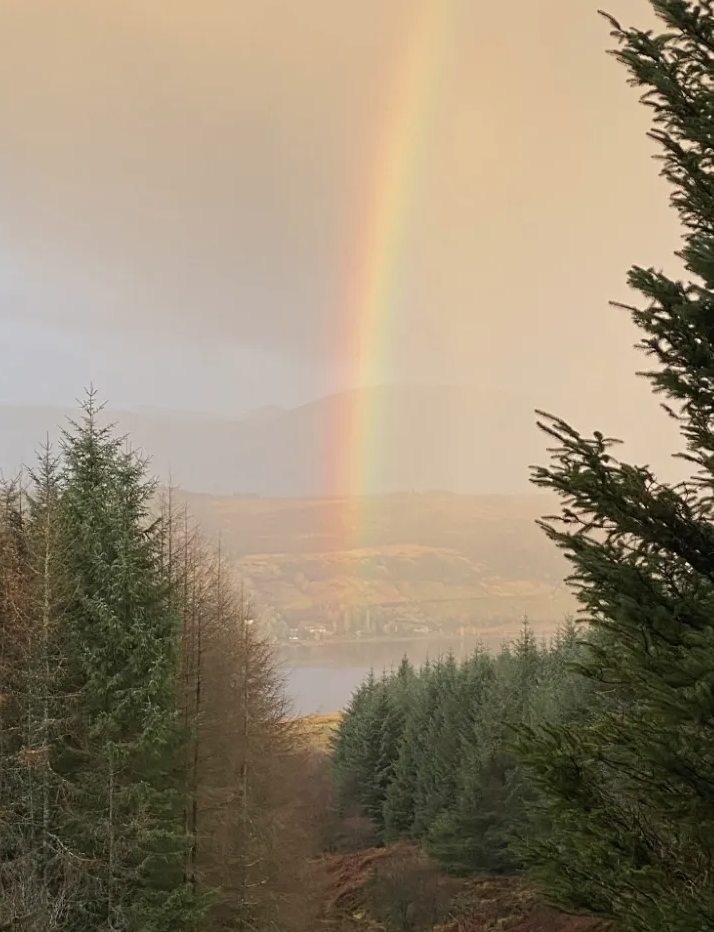Helen Edgar (Autisic Realms) November 2025
With thanks to Nick Walker and Andrew Reichart for their recent conversations with me. This piece is independent of their work, and Nick has not read this blog prior to publication. My understanding of the neuronormative paradigm and its implications might differ from theirs. Andrew has helped me understand that the normative paradigm is what drives and enforces neuronormativity and systemic injustice. It is only by critiquing and dismantling this that we can expose the harm and move forward.
Nick will write more about the neuronormative paradigm in their upcoming Neuroqueer Theory Anthology, in which I will have two chapters (one of which I co-authored with Ryan Boren, Stimpunks, who also kindly provided editing feedback for this blog).
In a recent webinar workshop Neurodiversity 101: You Are Not Broken (19th Sept, 2025), Andrew Reichart used a term conceptualised by Nick Walker that instantly resonated with me: the neuronormative paradigm. It was one of those lightbulb moments that brought immediate clarity; it gave a name to something I had felt and tried to articulate for years but had never had the words for. Through exploring the neuronormative paradigm, I hope to bring some clarity to why it matters to name the systems that harm, so we can start to see how deeply neuronormativity is woven through our schools, workplaces, healthcare settings, and even our shared ideas of what it means to be human.
Walker has been using the term neuronormative paradigm in their work since the publication of Neuroqueer Heresies (2021) as a replacement for the term pathology paradigm, which they have since said they “regret ever introducing, because it’s too easily misinterpreted and some of the misinterpretations have caused considerable harm”. With permission from Nick Walker (Walker, 2025, personal communication), I am exploring this concept and its relevance to understanding how society and systems define what is considered “normal”, especially here in the UK, US and other Western cultural landscapes.
The term neuronormative paradigm builds on and moves beyond Nick Walker’s earlier concept of the pathology paradigm. According to Walker (2021), “The pathology paradigm starts from the assumption that significant divergences from dominant sociocultural norms of cognition and embodiment represent some form of deficit, defect, or pathology. In other words, the pathology paradigm divides the spectrum of human cognitive/embodied performance into “normal” and “other than normal,” with “normal” implicitly privileged as the superior and desirable state..” It describes a view in which neurological differences, such as being Autistic, ADHD, or otherwise neurodivergent are medicalised and seen as deficits, disorders, or abnormalities that need to be corrected or cured. It locates the problem within the individual, assuming there is one “right” or “normal” kind of brain and behaviour.
The neuronormative paradigm, creates and enforces the social, cultural, and political systems that uphold the very ideas of normality. It sees neurodivergent people as broken or deficient. Us having the concept “the neuronormative paradigm, helps us name and challenge the power structures and systems that determine who is valued and who is pathologised. It enables us to challenge the foundations of a society that privileges certain ways of thinking, being, and communicating while marginalising others. This shift reframes the issue as the problem not being within neurodivergent people, but within the systems that define and uphold “normality” itself. By having a term for this, we can critique it, expose the harm, shift our thinking and move towards the neurodiversity paradigm.
The neuronormative and neurodiversity paradigms offer fundamentally different worldviews; one demands uniformity, while the other celebrates diversity. Language is powerful and can help make things visible. Until we can see how neuronormative domination has shaped our lives, we cannot dismantle the structures that bind us and move towards the neurodiversity paradigm, where all bodyminds (Dychtwald, K, 1977) are recognised as vital to the living ecology of human diversity.
What is the neuronormative paradigm?
The neuronormative paradigm creates and enforces the social, cultural, and political systems that assume there is one “right” way to be, one “correct” way to think, feel, sense, and move through the world. It privileges particular ways of learning, knowing, sensing, communicating and even resting and regulating while dismissing neurodivergent forms of being. Within this framework, neurodivergence is often treated as a problem to be corrected rather than as a meaningful expression of being human.
Neuronormativity refers to the dominant system of norms and practices in society that not only define but also enforce how attention should function, how senses should be regulated, how emotions should be expressed, and how we should act within society. These hierarchies produce profound epistemic injustice, positioning neurodivergent people as unreliable narrators of our own lives. Its power intersects with systems of ageism, racism, classism, sexism, ableism, and colonialism, reinforcing structures that determine who is dismissed or erased. Within the neuronormative paradigm, value is measured through capitalist notions of productivity and conformity, while other ways of being and relating are devalued and pathologised, leaving us disabled by the very environments we live in.
By contrast, the neurodiversity paradigm views neurological differences as a natural and valuable form of human diversity, part of the broader spectrum of biodiversity and cultural diversity. It sees Autistic, ADHD, and otherwise neurodivergent ways of being as integral to the richness of human experience, not deviations from it. From the perspective of the neurodiversity paradigm, our value is reframed through an ecological and relational lens, one that honours dignity, identity, inter-dependence and embraces the richness of all ways of being rather than being valued purely for adhering to neuronormative expectations for capitalist gain. This shift also opens space for neuroqueering (Walker, 2021) and invites us to imagine new possibilities for how minds, bodies, and relationships can form, embracing the potential to be in a constant state of becoming and transformation, both personally and collectively, as we rebuild society.
Moving between paradigms
To move meaningfully towards the neurodiversity paradigm, we must first understand, critique, resist and dismantle the neuronormative paradigm. Until we do this, we risk remaining stuck, with many people speaking the neurodiversity-lite language of inclusion while reproducing the same hierarchies of neuronormativity that cause harm. Recognising the dominance of neuronormativity enables us to name the pressures of minority stress (Botha and Frost, 2018) not as personal failings, but as social injustices. Once we recognise this, we can begin to rebuild environments and systems where everyone can live in their wonderfully diverse ways, and we can all get the support we need to thrive.
Where Neuronormativity Shows Up: Examples of communication and attention
Within the framework of the neuronormative paradigm, spoken language, eye contact, and small talk are generally treated as the “right” and expected ways to connect and communicate. An Autistic person who communicates differently, those who use AAC, are nonspeaking, or express themselves differently, may be seen as lacking social skills, or even be seen as less competent and less intelligent than they really are.
In the article Arresting Ableism: Insight and Experiences of a Nonspeaking Autistic (NeuroClastic, 2022), non-speaking Autistic writer Sabrina Guerra captures this injustice:
“When the rights of abled people take precedence over those of disabled people, our great shame is evident, and we must not consider ourselves a modern, progressive society.”
Sabrina Guerra (2022)
Guerra’s words remind us that when society only favours certain forms of expression as valid language, it silences and can dehumanise those whose voices emerge differently. Her experiences of being presumed less capable, infantilised, and excluded expose the harm of the neuronormative paradigm in action.
When systems are built around verbal, cognitive, and behavioural conformity, it harms everyone. People with complex and higher support needs, or with profound and multiple learning disabilities, are too often left out of this picture altogether and even more deeply marginalised. They are often denied autonomy, agency, and meaningful participation in decisions about their own lives. For these individuals, the weight of neuronormative domination can fall even more heavily.
Neuronormativity doesn’t only dictate how we should communicate; it also defines how we are expected to pay attention, manage our sensory systems, regulate and use our bodies. Our ways of resting, recharging, stimming, and seeking sensory comfort are often misinterpreted as pointless or disruptive rather than recognised as natural forms of self-regulation that carry great meaning and support our wellbeing.
An Autistic or ADHD child who becomes deeply immersed in a single topic or sensory interest is often labelled as inattentive, obsessive, or even defiant. Within the neurodiversity paradigm, such focus could be recognised as a form of monotropic flow and could be better understood through the theory of Monotropism (Murray et al., 2005 & Heasman et al., 2024). These authentic ways of being are often pathologised within neuronormative systems. Instead, they need to be reframed and supported as valid ways of being, through neuro-affirming adjustments to both the environment and the ways our relationships are formed and evolve.
When we reframe neurodivergence within the neurodiversity paradigm, communication is understood as diverse, relational, and embodied. This perspective enables us to embrace authentically neurodivergent love locutions such as infodumping, penguin pebbling, and supportive relational strategies like body doubling and parallel play. It validates Autistic and otherwise neurodivergent people’s natural ways of connecting, through shared interests, flow, repetition, sensory attunement, movement, silence and interdependence as authentic and deeply meaningful. However, even as we begin to recognise these authentic and relational forms of communication, they still continue to exist within systems governed and dominated by neuronormative standards and expectations.
Neuronormative Dominantion
Neuronormative domination is the measure through which human competence, compliance, rest, productivity, and even belonging are judged. This doesn’t just shape how difference is perceived; it also determines who gets to belong and thrive and who gains access to care. Those whose bodyminds align most closely with neuronormative ideals are generally rewarded with social status, employment, and safety, while those who diverge are more likely to experience poverty, exclusion, institutional harm and also greater health concerns. Neuronormativity can be seen to be reinforcing the existing hierarchies of class, race, gender, and disability as it embeds inequality deep within our economic and social systems.
Schools reward those who can sit still and divide their attention to focus on work, often in busy and overwhelming environments. Workplaces generally value multitasking, tolerance of sensory overload, and social compliance. Healthcare systems privilege people who can articulate distress in what is deemed as acceptable and expected ways, often dismissing how alexithymia and interoception may affect neurodivergent people. They rarely consider the overlapping needs of those who are multiply neurodivergent and also have additional physical, health or learning needs.
For those of us whose bodyminds work differently, the systems we have are not neutral. They are constantly reminding us that we are too much, too little, too fast, too slow, too sensitive, too emotional, or not enough or sometimes just ‘not right’! It leaves us marginalised not because of how our bodyminds function, but because the world has been built around such a narrow idea of what a “functional” or “normal” person should be like. There is no room for different ways of being without the risk of being stigmatised or it affecting our well-being. This is why our neurodivergent community is so important, it provides that space and sense of belonging where we can feel safer with other people who just ‘get it’ (Botha, Dibbs & Frost, 2022).
Minority Stress and Systemic Harm
The minority stress model, extended to include Autistic people’s experiences by Botha & Frost (2018), helps explain why neurodivergent people experience disproportionately high rates of anxiety, depression, burnout and death by suicide (Moseley et al., 2025). Minority stress arises when people from marginalised groups face chronic prejudice, discrimination and a lack of safety. For Autistic and otherwise neurodivergent people, this stress is sustained by the systems that uphold neuronormativity itself.
As Milton (2012) describes in his concept of the Double Empathy Problem, these challenges are not rooted in a lack of social or emotional understanding within Autistic people, but in a mutual misattunement between differently embodied communicative worlds and lived experiences. The problem lies in the cultural expectation that neuro-normative modes of relating and communicating are the best.
In my own work, I have argued that this problem is DEEP ( Double Empathy Extreme Problem; Dynamic, Embodied, Ecological, and Political) (Edgar, 2023). It operates through the power dynamics of whose communication counts, whose distress and ways of expressing joy is recognised (Wassell, 2025), and who is deemed acceptable. When neurodivergent people are constantly required to translate ourselves for neuronormative comfort, we carry a chronic social and sensory load that erodes our well-being and leaves us in burnout.
Living in a world that continually questions, corrects, or punishes our natural ways of thinking and sensing creates both external stressors (exclusion, stigma, systemic barriers) and internal ones (masking, self-doubt, hypervigilance). For multiply marginalised people, those who are also racialised, queer, economically excluded, or otherwise disabled, the value placed on neuronormativity compounds existing systems of oppression, further amplifying harm. Burnout, isolation, and masking are not intrinsic parts of being neurodivergent (Pearson and Rose, 2021); they happen when our ways of being come up against a neuronormative world that doesn’t understand or make space for our needs and constantly tries to ‘fix’ us, or worse just exclude us.
Empire of Normality
In Empire of Normality: Neurodiversity and Capitalism (2023), Autistic philosopher and researcher Robert Chapman traces how the idea of a “normal” person emerged alongside industrial capitalism. Chapman argues that normality is not neutral; it’s a tool of economic and political control.
Under capitalism, the ideal person is someone who works predictably, productively, and efficiently. Education and healthcare settings, as well as workplaces, have always rewarded people who align with this model and marginalised those who don’t. Chapman demonstrates how this empire of normality continues to govern our institutions, where people prioritise compliance over creativity, speed over sustainability, and uniformity over humanity. As Chapman notes, normality serves as a biopolitical tool, disciplining populations to conform to capitalist ideals.
Neuronormative domination thrives in Capitalist societies; however, the consequences for many neurodivergent people mean we may be left trapped in “stuck states”, exhausted, feeling fragmented and in perpetual burnout. The effects of the neuronormative paradigm are costing lives. Sadly, Autistic people have been found to have up to an eightfold increased risk of death by suicide compared to non-Autistic people (Brown et al., 2024) and up to 66% have experienced suicidal thoughts. There are 2,025 Autistic people and people with a learning disability currently in mental health hospitals in England, and of these 72% are identified as Autistic. These should not be inevitable consequences of being different; it shows how the system is failing to meet our needs.
Dismantling the neuronormative paradigm: Enabling everyone to thrive
As awareness of neurodiversity grows, the language of neuro-affirming practice has become more common. Yet this shift can sometimes be superficial and many people and organisations may sound progressive whilst they are still operating within neuronormative frameworks that prioritise conformity over authenticity and compliance over genuine inclusion. It can be difficult to know who to trust when words of acceptance are used to mask practices that continue to pathologise or control. These “neurodiversity-lite” approaches soften deficit language and adopt inclusive terms without creating the structural change needed to support real neurodivergent flourishing.
Dismantling the neuronormative paradigm means recognising neurodiversity-lite and calling it out, resisting the deep cultural and political systems that define human worth and behaviourist practices that seek to control the ways we use our bodies and restrict our potential. We need to unlearn and restory the narrative that only values and rewards us through compliance, productivity, and proximity to a myth of normality. Actively rejecting the neuronormative paradigm means accepting that there is no single, universal norm, no one right way to be. We need to reimagine and redefine our notions of value, ability, and worth, as well as what it truly means to be human, beyond the confines of neuronormativity.
When we begin to unlearn these patterns, we can create space for a living ecology of bodyminds, an interdependent, intertwined web of diverse ways of communicating, sensing, moving, thinking, and relating that have always existed beyond the limits of a supposed normality. We need to build spaces where difference is not seen as a deviation but a vital part of a collective whole.
Dismantling the neuronormative paradigm and embracing the neurodiversity paradigm means moving from correction to connection, from conformity to reciprocity. It invites us to expand our bodyminds, to neuroqueer ourselves and our societies, to subvert the assumptions of normality and open new ways of being, knowing, and belonging. To neuroqueer is to live in ways that resist neuronormativity and enable us to reclaim autonomy, agency and creativity. It isn’t just about inclusion; it’s about liberation. It’s about cultivating a society where everyone can grow and flourish together.
By naming the systems that harm, we can embrace neurodiversity, transform our systems and rebuild our worlds so that everyone can thrive.
References
Botha, M. & Frost, D. (2018). Extending the Minority Stress Model to Understand Mental Health Problems Experienced by the Autistic Population. Society and Mental Health. 10. 10.1177/2156869318804297.
https://www.researchgate.net/publication/328074306_Extending_the_Minority_Stress_Model_to_Understand_Mental_Health_Problems_Experienced_by_the_Autistic_Population
Botha, M., Dibb, B., & Frost, D. M. (2022). ‘It’s being a part of a grand tradition, a grand counter-culture which involves communities’: A qualitative investigation of autistic community connectedness. Autism, 26(8), 2151–2164. https://doi.org/10.1177/13623613221080248
Boren, R. (2022). The five neurodivergent love locutions. Stimpunks Foundation. https://stimpunks.org/2022/01/22/the-five-neurodivergent-love-languages-2/
Chapman, R. (2023). Empire of normality: Neurodiversity and capitalism. Pluto Press.
https://www.plutobooks.com/product/empire-of-normality/
Dychtwald, K. (1986). Bodymind. Pantheon. (Original work published 1977).
Edgar, H. (2024, June 25). Why PBS is harmful for Autistic and neurodivergent young people (Part 1). Neurodiverse Connection UK.
https://ndconnection.co.uk/blog/why-pbs-harmful-part1
Edgar, H., Boren, R., Adams, C., & Hobbs, N. (2025, February 15). Autism & the map of neuronormative domination: Stuck states vs flow states. Autistic Realms. https://autisticrealms.com/autism-the-map-of-neuronormative-domination-stuck-states-vs-flow-states/
Edgar, H. (2024, June). The double empathy problem is DEEP. Autistic Realms. https://autisticrealms.com/the-double-empathy-problem-is-deep
Edgar, H. (2024, March). Beyond “Neurodiversity Lite”: Why Neurodiversity-Affirming Practice Matters: Why neurodiversity-affirming practice matters. Autistic Realms. https://autisticrealms.com/authentic-neurodiversity-affirming-practice-matters/
Edgar, H. (2025, August). Autistic mental health: Beyond the pathology paradigm. Autistic Realms. https://autisticrealms.com/autistic-mental-health-beyond-the-pathology-paradigm/autisticrealms.com
Edgar, H. (2023, July 28). Autistic Pride: Restorying & Unknowing Autism. Autistic Realms. https://autisticrealms.com/autistic-pride-restorying-unknowing-autism/
Guerra, S. (2022, March 10). Arresting ableism: Insight and experiences of a nonspeaking autistic. NeuroClastic. https://neuroclastic.com/arresting-ableism-insight-and-experiences-of-a-nonspeaking-autistic/
Heasman, B., Williams, G. L., Charura, D., Hamilton, L. G., Milton, D., & Murray, F. (2024). Towards autistic flow theory: A non-pathologising conceptual approach. Journal for the Theory of Social Behaviour, 54(4), 469-497. https://doi.org/10.1111/jtsb.12427
Milton, D. E. M. (2012). On the ontological status of autism: the ‘double empathy problem.’ Disability & Society, 27(6), 883–887. https://doi.org/10.1080/09687599.2012.710008
Murray D, Lesser M, Lawson W. Attention, monotropism and the diagnostic criteria for autism. Autism. 2005 May;9(2):139-56. doi: 10.1177/1362361305051398. PMID: 15857859.
https://pubmed.ncbi.nlm.nih.gov/15857859/
Moseley RL, Hedley D, Gamble-Turner JM, Uljarević M, Bury SM, Shields GS, Trollor JN, Stokes MA, Slavich GM. Lifetime stressor exposure is related to suicidality in autistic adults: A multinational study. Autism. 2025 May;29(5):1184-1208. doi: 10.1177/13623613241299872. Epub 2024 Dec 10. PMID: 39655441; PMCID: PMC12038079.
https://pubmed.ncbi.nlm.nih.gov/39655441/
Pearson A, Rose K. A Conceptual Analysis of Autistic Masking: Understanding the Narrative of Stigma and the Illusion of Choice. Autism Adulthood. 2021 Mar 1;3(1):52-60. doi: 10.1089/aut.2020.0043. Epub 2021 Mar 18. PMID: 36601266; PMCID: PMC8992880.
https://pubmed.ncbi.nlm.nih.gov/36601266/
Walker, N. (2014). Neurodiversity: Some basic terms & definitions. Neuroqueer.
https://neuroqueer.com/neurodiversity-terms-and-definitions/
Walker, N. (2021). Neuroqueer heresies: Notes on the neurodiversity paradigm, autism, and cognitive liberty. Autonomous Press.
Walker, N. (19th Sept, 2025). Personal communication with Helen Edgar re: Neuronormative Paradigm.
Wassell, E. (2025). Experiences of autistic joy. Disability & Society, 1–26. https://doi.org/10.1080/09687599.2025.2498417
Further Reading
(The list below follows a post by Sonny Jane Wise in Autistic Researchers Researching Autism (ARRA) group 12th Nov 2025 related to neuronormativity and neuronormative domination – not yet alphabetical or in any order!)
Tarragnat, O. (2025, November 3). What is pathology-lite? Ombre Tarragnat. https://ombretarragnat.com/2025/11/03/what-is-pathology-lite/
Nic Rios, Accounting For Neuronormativity In Transgender Medicine, Social Science & Medicine, Volume 367, 2025, 117802, Issn 0277-9536, Https://Doi.Org/10.1016/J.Socscimed.2025.117802.
Jacobsen, K. (2025). “I had this fear that as an autistic person, they would take me less seriously”: Trans autistic experiences of epistemic (in)justice in gender-affirming care. International Journal of Transgender Health, 1–18. https://doi.org/10.1080/26895269.2025.2566190
Catala, A., Faucher, L. & Poirier, P. Autism, epistemic injustice, and epistemic disablement: a relational account of epistemic agency. Synthese 199, 9013–9039 (2021). https://doi.org/10.1007/s11229-021-03192-7
Hillary, A. (2022). Neurodiversity and cross-cultural communication in Neurodiversity studies, pg 91-107, Routledge
https://files.znu.edu.ua/files/Bibliobooks/Inshi71/0051276.pdf#page=106
Zaks, Z. (2025). Moving to a neurodiversity-affirming paradigm in the support system: Autistic professionals As paradigm change. Neurodiversity, 3. https://doi.org/10.1177/27546330241294138 (Original work published 2025)
Santinele Martino, A., Fudge Schormans, A., (2020) Theoretical developments Queer theory meets crip theory in The Routledge Handbook of Disability. and Sexuality. Routledge
Nair, V. K., Farah, W., & Boveda, M. (2024). Is neurodiversity a Global Northern White paradigm? Autism, 0(0). https://doi.org/10.1177/13623613241280835
Annamma, S. A., Connor, D., & Ferri, B. (2012). Dis/ability critical race studies (DisCrit): theorizing at the intersections of race and dis/ability. Race Ethnicity and Education, 16(1), 1–31. https://doi.org/10.1080/13613324.2012.730511
Marya, R., & Patel, R. (2022). Inflamed: Deep Medicine and the Anatomy of Injustice. Penguin Press.
Bruno, G., Lindblom, A., Tupou, J., Kewene, F., Waisman, T., & Magiati, I. (2025). Decolonizing autism research: Integrating Indigenous ways of knowing, being, and doing. Autism, 29(11), 2637-2643. https://doi.org/10.1177/13623613251382398 (Original work published 2025)
Bruno, G. (2024). Decolonizing Autism: An Exploration into the Experiences of First Nations People in Canada. In University of Alberta Library. https://doi.org/10.7939/r3-k592-zc85
Bruno, G. (2023) Indigenous Perspective On Building Inclusive Autism Practices (presentation)
oJhansson, Anna M. (2025) “The Intersectionality of Indigenous and Neurodivergent Identities in American Indian Education,” Access*: Interdisciplinary Journal of Student Research and Scholarship: Vol. 9: Iss. 1, Article 7. Available at: https://digitalcommons.tacoma.uw.edu/access/vol9/iss1/7
Linklater, R. (2014). Decolonizing trauma work: Indigenous Stories and Strategies. Fernwood Publishing
Hoover A, Jeffries I, Thomas M, Leston J. Health Care Access and Lived Experience of American Indian/Alaska Native Two Spirit and LGBTQ+ Participants in the Pride and Connectedness Survey, 2020. Public Health Rep. 2023 Sep-Oct;138(2_suppl):48S-55S. doi: 10.1177/00333549231151650. Epub 2023 Feb 3. PMID: 36734193; PMCID: PMC10515980.
Lewis, C. J., & Arday, J. (2025). We See Things They’ll Never See: Love, Hope, and Neurodiversity. Princeton University Press.
Snow, Ishah Sarah et al (2025) Autism in America: One Woman’s Search for Healing: (A Trauma-Informed Guide to Systemic Oppression) . SpiroLateral.org Trauma-Informed Systems Series.
